Dell Active Fabric Manager 2.5: why you need it and what's new in the latest version
In early May, Dell released a new version of Active Fabric Manager 2.5. Habré has not yet had a review on this product, so we’ll tell you why it is needed and what is special about the new version.
Briefly about what Active Fabric
This concept was developed for virtualized data centers and private clouds in order to solve their existing problems. The number of nodes in large data centers is growing very rapidly, as well as the number of transmitted traffic between nodes of the same level (east-west). The Active Fabric approach was developed in order to build communication between nodes in the most optimal, economical, and with the possibility of easy scalability.
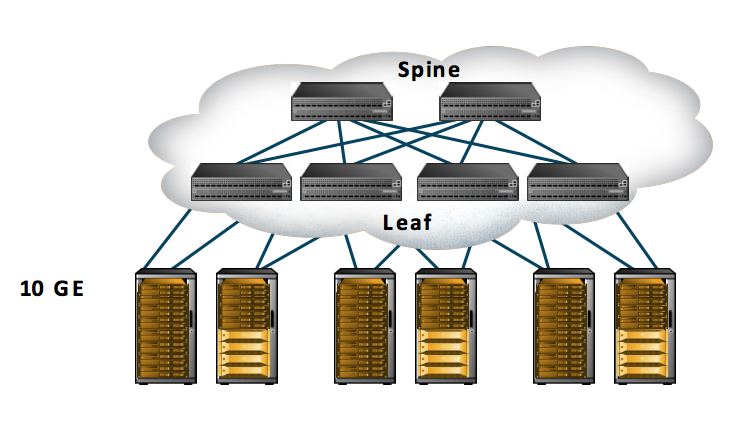
Dell is launching a line of switches for organizing a network fabric called the Dell Active Fabric. Among them, fixed configuration switches with 1, 10 or 40 GbE interfaces, as well as a blade switch for the Dell PowerEdge M1000e blade chassis. This set of switches and adherence to the concept of Active Fabric allows you to transform the traditional data center network architecture into a flat one, which greatly simplifies its management, reduces operating costs, and also makes it very quick and easy to scale the data center.
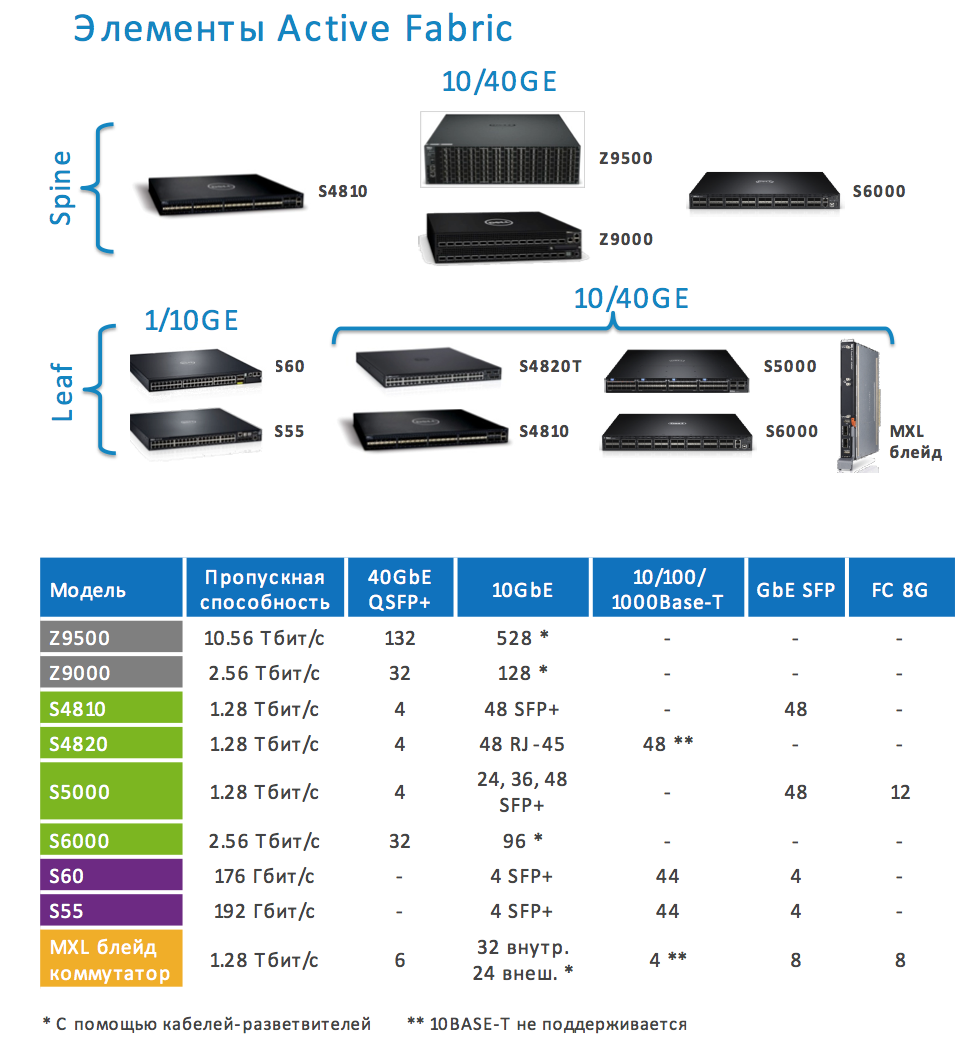
')
On average, an Active Fabric-based network is 30-70% more economical and reduces operating costs by 30% or more compared to a network based on traditional network equipment in the form of modular chassis (see the report Gartner - Rights for the Enterprise Data Center Network ) .
Active Fabric Manager Features
For the design, deployment and management of a data center switching network based on this approach, Dell has released Active Fabric Manager software (AFM).
This software solution allows you to solve all these tasks through a single console. Moreover, due to the use of ready-made templates for network architecture (they can be customized) and high automation, the time required for solving tasks related to manual design, management and construction of a data center switching network can be reduced by 86%.
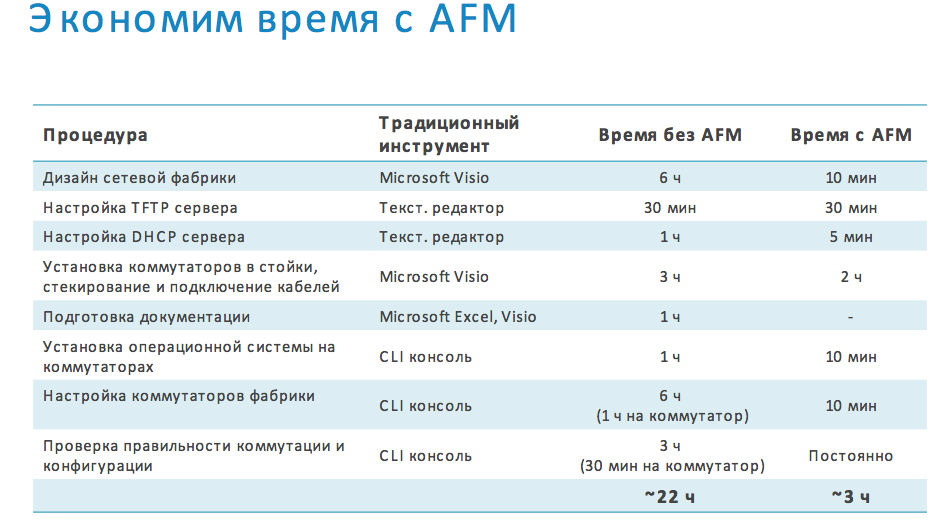
Dell thus partially implements the SDN (software-defined networks) approach by introducing automated network building and management features.
The AFM software product offers the network administrator to design and configure the network in a visual environment, which greatly simplifies and speeds up the entire process. At the network design stage, AFM requests the number of ports at the access level and their type, the factory option (Layer 2 or Layer 3) and offers to choose one of the network design templates.
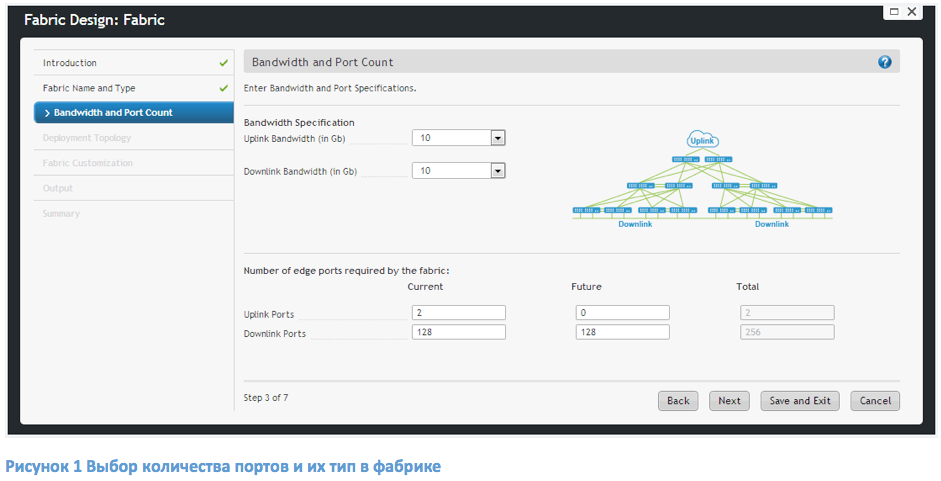
AFM contains hundreds of pre-installed factory templates that have been tested and used in real enterprises. These include Layer 3 spine-leaf factories, a converged LAN / SAN environment using iSCSI, FC and FCoE protocols, as well as a Layer 2 factory with Virtual Link Trunking (VLT) technology, which avoids reliance on the Spanning Tree protocol and the ability to use all channels in the factory.

On the basis of the selected AFM template, it automatically calculates the optimal topology and offers a connection scheme for the switch ports among themselves (see figure below), eliminating errors and shortcomings that often occur during manual design.

AFM allows you to deploy a network in minutes based on the developed network design. After completion of the design phase, AFM automatically configures the devices and provides the administrator with the tools to configure them more precisely (VLAN numbers used, IP addressing, routing protocols). Thus, the administrator can solve basic tasks through the AFM user interface without entering a single CLI command.
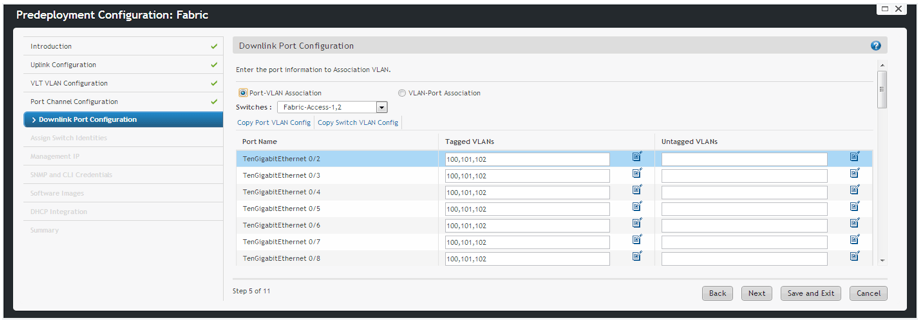
After that, the switches are installed in racks, their ports are crossed, the control ports of the switches are connected to the control network that has access to the virtual machine with Active Fabric Manager software, and the power is turned on. Using DHCP and TFTP, switches automatically receive their configuration files and actual operating system files and are loaded. The AFM verifies the compliance of the current cross-connect of the switch ports with the projected design and notifies the administrator in the event of a mismatch.
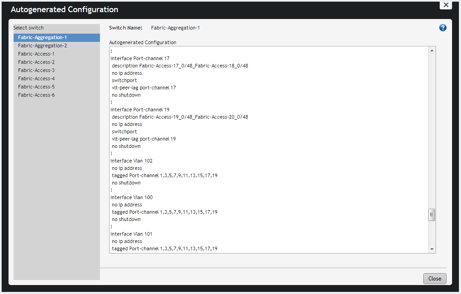
The AFM solution contains tools for daily monitoring of the network, software upgrades, backup and reloading of individual switches, tracking of emergency events in the network that require the attention of the network administrator, etc.
That is, in fact, AFM has a complete set of tools for each stage of the life cycle of the data center switching network.
At the same time, the software product works outside the paths along which the data “walk”. If the server with AFM fails, the network managed by AFM will continue to function. However, Dell has taken care to equip AFM with fall protection features to cope with the problem without human intervention.
The new version of AFM 2.5 also contains APIs for integration with a number of high-level applications, including Dell's OpenManage Network Manager, the OpenStack Neutron plugin and VMware vSphere Distributed Switch (VDS).
A brief description of the features of AFM 2.5 and their advantages
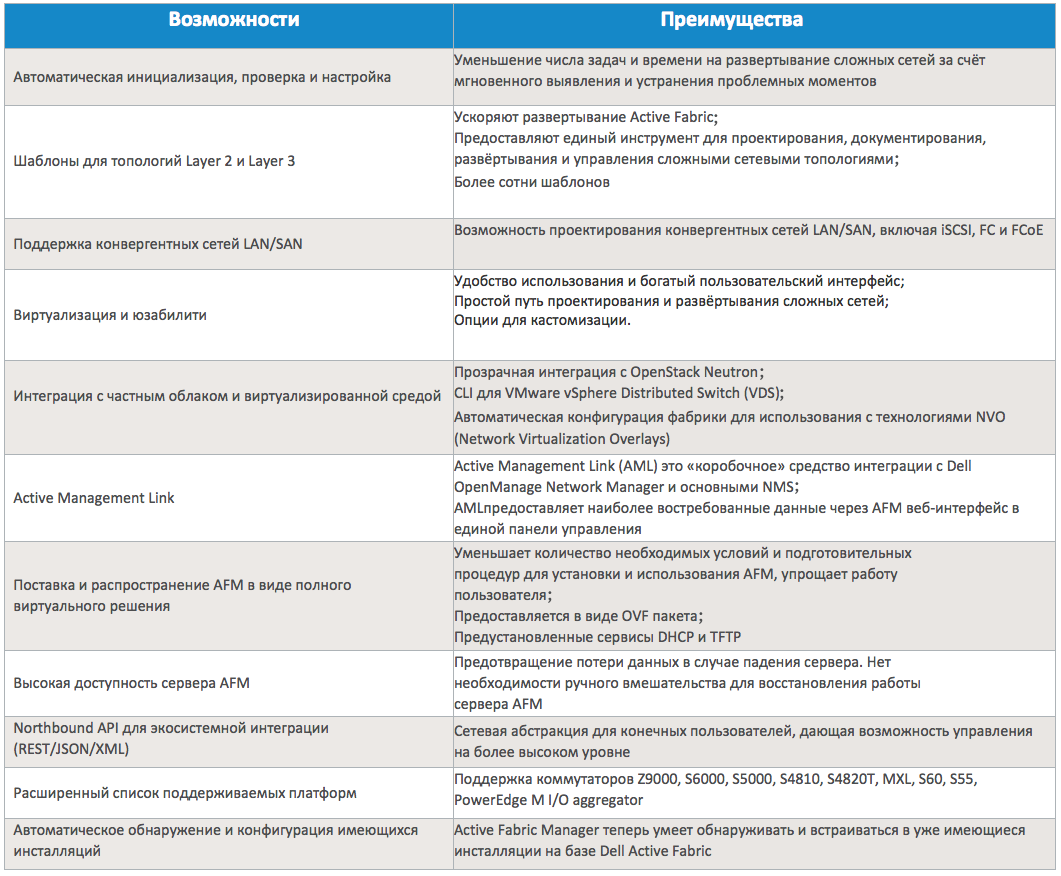
Briefly about what Active Fabric
This concept was developed for virtualized data centers and private clouds in order to solve their existing problems. The number of nodes in large data centers is growing very rapidly, as well as the number of transmitted traffic between nodes of the same level (east-west). The Active Fabric approach was developed in order to build communication between nodes in the most optimal, economical, and with the possibility of easy scalability.

Dell is launching a line of switches for organizing a network fabric called the Dell Active Fabric. Among them, fixed configuration switches with 1, 10 or 40 GbE interfaces, as well as a blade switch for the Dell PowerEdge M1000e blade chassis. This set of switches and adherence to the concept of Active Fabric allows you to transform the traditional data center network architecture into a flat one, which greatly simplifies its management, reduces operating costs, and also makes it very quick and easy to scale the data center.

')
On average, an Active Fabric-based network is 30-70% more economical and reduces operating costs by 30% or more compared to a network based on traditional network equipment in the form of modular chassis (see the report Gartner - Rights for the Enterprise Data Center Network ) .
Active Fabric Manager Features
For the design, deployment and management of a data center switching network based on this approach, Dell has released Active Fabric Manager software (AFM).
This software solution allows you to solve all these tasks through a single console. Moreover, due to the use of ready-made templates for network architecture (they can be customized) and high automation, the time required for solving tasks related to manual design, management and construction of a data center switching network can be reduced by 86%.

Dell thus partially implements the SDN (software-defined networks) approach by introducing automated network building and management features.
The AFM software product offers the network administrator to design and configure the network in a visual environment, which greatly simplifies and speeds up the entire process. At the network design stage, AFM requests the number of ports at the access level and their type, the factory option (Layer 2 or Layer 3) and offers to choose one of the network design templates.

AFM contains hundreds of pre-installed factory templates that have been tested and used in real enterprises. These include Layer 3 spine-leaf factories, a converged LAN / SAN environment using iSCSI, FC and FCoE protocols, as well as a Layer 2 factory with Virtual Link Trunking (VLT) technology, which avoids reliance on the Spanning Tree protocol and the ability to use all channels in the factory.

On the basis of the selected AFM template, it automatically calculates the optimal topology and offers a connection scheme for the switch ports among themselves (see figure below), eliminating errors and shortcomings that often occur during manual design.

AFM allows you to deploy a network in minutes based on the developed network design. After completion of the design phase, AFM automatically configures the devices and provides the administrator with the tools to configure them more precisely (VLAN numbers used, IP addressing, routing protocols). Thus, the administrator can solve basic tasks through the AFM user interface without entering a single CLI command.

After that, the switches are installed in racks, their ports are crossed, the control ports of the switches are connected to the control network that has access to the virtual machine with Active Fabric Manager software, and the power is turned on. Using DHCP and TFTP, switches automatically receive their configuration files and actual operating system files and are loaded. The AFM verifies the compliance of the current cross-connect of the switch ports with the projected design and notifies the administrator in the event of a mismatch.

The AFM solution contains tools for daily monitoring of the network, software upgrades, backup and reloading of individual switches, tracking of emergency events in the network that require the attention of the network administrator, etc.
That is, in fact, AFM has a complete set of tools for each stage of the life cycle of the data center switching network.
At the same time, the software product works outside the paths along which the data “walk”. If the server with AFM fails, the network managed by AFM will continue to function. However, Dell has taken care to equip AFM with fall protection features to cope with the problem without human intervention.
The new version of AFM 2.5 also contains APIs for integration with a number of high-level applications, including Dell's OpenManage Network Manager, the OpenStack Neutron plugin and VMware vSphere Distributed Switch (VDS).
A brief description of the features of AFM 2.5 and their advantages

Source: https://habr.com/ru/post/223245/
All Articles